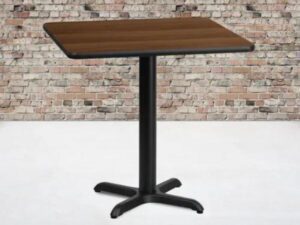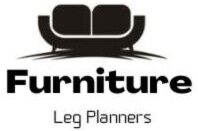Table-mounted equipment is a common sight in various settings, from offices and laboratories to workshops and homes. While we often focus on the functionality and features of such equipment, one crucial aspect that is often overlooked is the height of its legs. In this article, we will explore How High Must Legs Be On Table-Mounted Equipment?
Importance Of Proper Leg Height
Having the right leg height for table-mounted equipment is crucial for several reasons. First and foremost, it directly impacts ergonomics and user comfort. A table that is too low or too high can lead to discomfort, fatigue, and even musculoskeletal disorders for the users.
Factors To Consider For Table-Mounted Equipment
When determining the leg height for table-mounted equipment, several factors should be taken into account. The nature of the tasks performed, the height of the users, and the intended use of the equipment are all crucial considerations. Additionally, the type of equipment, such as desks, workbenches, or machinery, may have specific requirements.
Ergonomics And User Comfort
Proper ergonomics is essential to promote user comfort and prevent injuries. The leg height of table-mounted equipment plays a significant role in achieving optimal ergonomic positioning. When the equipment is at the correct height, users can maintain a neutral posture, reducing strain on their muscles and joints.

Ideal Height For Different Types Of Equipment
Different types of table-mounted equipment have varying ideal leg heights. For instance, office desks should generally be adjusted to a height that allows users to maintain a 90-degree angle at their elbows and wrists when typing. On the other hand, workbenches or laboratory tables may require different height considerations based on the nature of the work being performed.
Adjustability And Customization Options
Flexibility in leg height adjustment is a valuable feature for table-mounted equipment. Adjustable legs allow users to customize the height according to their preferences and specific requirements. This adaptability is particularly important in shared workspaces where multiple users with different needs may utilize the same equipment.
Benefits Of Proper Leg Height
When table-mounted equipment is set at the appropriate leg height, it offers numerous benefits. Users experience increased comfort, improved productivity, and reduced risk of work-related injuries. Proper leg height also promotes better blood circulation and reduces strain on the neck, shoulders, and back.

Potential Risks Of Incorrect Leg Height
Ignoring the importance of leg height can lead to various risks. If the equipment is too low, users may have to slouch or hunch over, leading to postural issues and discomfort. Conversely, a table that is too high can strain the neck and shoulders, causing muscular fatigue and pain.
Safety Considerations
Proper leg height also contributes to the overall safety of table-mounted equipment. An unstable or unbalanced table can pose a risk of tipping over, potentially causing damage to the equipment or injury to users. Ensuring the correct leg height helps maintain stability and reduces the risk of accidents.
Choosing The Right Leg Height for Specific Tasks
Different tasks require specific table heights to facilitate efficiency and effectiveness. For example, a table used for writing or drawing may need to be lower than one used for standing work or assembly tasks. Understanding the specific tasks performed on the equipment is vital in determining the most suitable leg height.
Impact On Productivity And Efficiency
Proper leg height directly influences productivity and efficiency. When users can work comfortably and without unnecessary strain, they can focus better and perform tasks more efficiently. This, in turn, can lead to improved overall productivity and output.
Installation And Assembly Guidelines
During the installation and assembly of table-mounted equipment, following the manufacturer’s guidelines is essential. Manufacturers often provide specific instructions regarding leg height adjustment and assembly procedures to ensure optimal functionality and user experience.
Maintenance And Inspection Of Table-Mounted Equipment
Regular maintenance and inspection of table-mounted equipment are crucial for its longevity and optimal performance. As part of the maintenance routine, it is important to check and adjust leg heights as needed, ensuring that they remain in the correct position.
Tips For Adjusting Leg Height
When adjusting the leg height of table-mounted equipment, there are a few helpful tips to keep in mind. First, consider the user’s height and preferred working position. Second, test the adjusted height for comfort and proper ergonomics. Finally, take advantage of any adjustability features provided by the equipment.
Conclusion
The leg height of table-mounted equipment plays a significant role in promoting user comfort, ergonomics, and productivity. By considering factors such as task requirements, user preferences, and safety considerations, it is possible to determine the ideal leg height for different types of equipment. Regular maintenance and adjustment of leg height are essential to ensure an optimal working environment and prevent potential health issues associated with incorrect positioning.
FAQs (How High Must Legs Be On Table-Mounted Equipment?)
Why is proper leg height important for table-mounted equipment?
Proper leg height is crucial for table-mounted equipment as it directly impacts user comfort, ergonomics, and overall productivity. When the equipment is set at the correct height, users can maintain a neutral posture, reducing the risk of musculoskeletal disorders and discomfort. It also ensures that users can work efficiently without unnecessary strain or fatigue.
Can adjustable leg height benefit multiple users in shared workspaces?
Yes, adjustable leg height is particularly beneficial in shared workspaces where multiple users with different height preferences may utilize the same table-mounted equipment. Adjustable legs allow each user to customize the height according to their specific requirements, ensuring optimal comfort and ergonomics for everyone.
How does incorrect leg height affect user comfort and safety?
Incorrect leg height can have negative effects on user comfort and safety. If the equipment is too low, users may have to slouch or hunch over, leading to discomfort and potential postural issues. Conversely, a table that is too high can strain the neck and shoulders, causing muscular fatigue and pain. Additionally, an unstable table due to incorrect leg height can pose a safety risk, potentially leading to accidents and injuries.
What are the ideal leg height considerations for office desks?
For office desks, the ideal leg height should allow users to maintain a 90-degree angle at their elbows and wrists when typing. This promotes a neutral posture and reduces strain on the upper body. It is recommended to adjust the desk height so that the user’s feet are comfortably resting on the floor or a footrest, with knees bent at a 90-degree angle.
How can I determine the right leg height for my table-mounted equipment?
To determine the right leg height for your table-mounted equipment, consider the nature of the tasks performed and the height of the users. Additionally, follow ergonomic guidelines and recommendations specific to the type of equipment. Test different heights to find the one that offers optimal comfort, promotes good posture, and allows for efficient task performance. Adjustable legs provide flexibility in finding the perfect height for your specific needs.



2 thoughts on “How High Must Legs Be On Table-Mounted Equipment? Full Guide 2023”